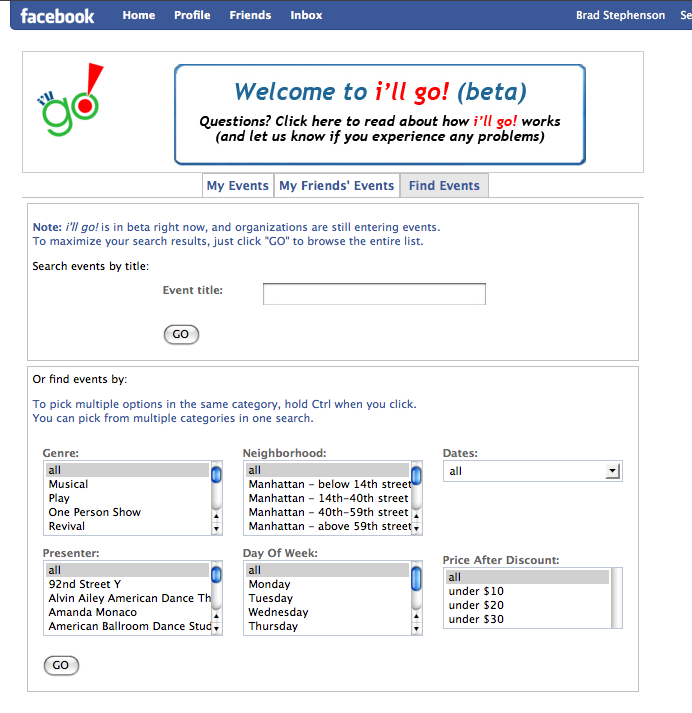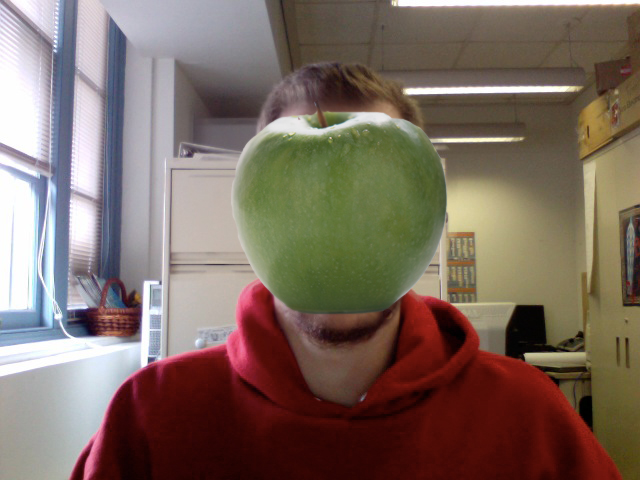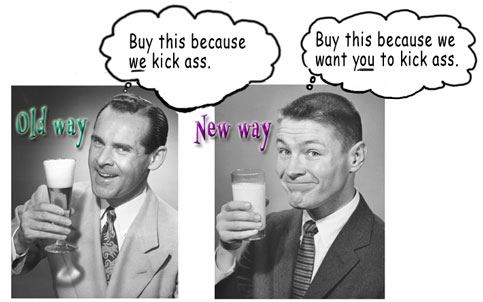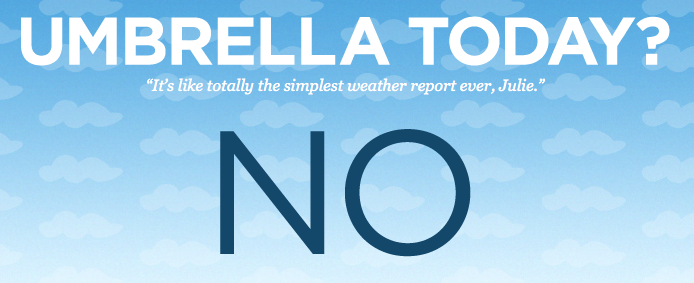Carnegie Mellon University’s Heinz College, home to Technology in the Arts, recently hosted an official party for SXSW Interactive and Film 2013. The Austin, TX, conference/festival is often referred to as “Spring Break for Geeks,” because it offers technology industry professionals a chance to immerse themselves in the latest innovations while being served free alcohol every time they turn around.
Arts-Tech Things Are Happening And You Should Know
Steve Jobs: The Epitome of the Arts and Technology Intersection
Center for Arts Management and Technology Update
Some of you may have heard that the Center for Arts Management and Technology is undergoing a restructuring process. David Dombrosky, CAMT's former executive director, recently resigned from Carnegie Mellon University. Everyone involved with CAMT thanks him for his service and support these last four years, and we wish him the best as he starts a new chapter in his life. Many of you may know me from my years with CAMT (2004-2009) and my involvement in the founding of its Technology in the Arts resource line. I will be assisting Dan Martin in the restructuring of CAMT to integrate all of its products and services under Technology in the Arts. CAMT is currently not accepting new software clients, but we're continuing to support existing clients during this restructuring process.
Please continue to take advantage of the Technology in the Arts resources, and we look forward to bringing you an even stronger arts and technology service line in the very near future.
If you have any questions, please contact Brad Stephenson at bstephenson@cmu.edu.
More Proof - "Free" Can Have Value
 I've stated on our blog and podcast many times that you can offer your content for free without devaluing that content.
Frequent followers will recall two interviews with independent musician Jonathan Coulton (podcasts #38 and #55), who has given most of his music away and still manages to make a decent living. (I cannot define "decent" exactly, but I imagine he does quite well for himself.)
I've stated on our blog and podcast many times that you can offer your content for free without devaluing that content.
Frequent followers will recall two interviews with independent musician Jonathan Coulton (podcasts #38 and #55), who has given most of his music away and still manages to make a decent living. (I cannot define "decent" exactly, but I imagine he does quite well for himself.)
Well, thanks to Amazon's 2008 best-selling albums list, I have even more proof that free does not equal worthless. According to ReadWriteWeb, the best-selling album in Amazon's MP3 store for 2008 was Ghosts I-IV by Nine Inch Nails. Interestingly, that same album was available for free (and legally!) in March via BitTorrent under the Creative Commons Attribution-Noncommercial-Share Alike license.
This means that either: A) People ignored the fact that the album was available for free and opted to pay, or B) people downloaded the album for free and paid after listening because they felt it was worth the money. A third option, of course, is that people were just too dumb or lazy to figure out how to use BitTorrent. This, however, is unlikely. After all, this is the fan base for Nine Inch Nails we're talking about here... not Frankie Valli and the Four Seasons.
This is not to say that opera companies should start giving away tickets. I'm simply saying that arts organizations might consider lightening up a bit when it comes to offering content online.
("Free LSD" photo courtesy of corypina's Flickr stream.)
Leaving CAMT
 After three years with CAMT, I will be stepping down as director of projects and marketing to begin the next phase of my career. On January 19, 2009, I will become the Web Content Manager for Carnegie Mellon's Heinz College. I'll be in the same building as CAMT, but it saddens me deeply that I will no longer be working with our many great clients and partners.
Connecting with so many amazing people is just one of the numerous reasons I have thoroughly enjoyed my experience with CAMT.
After three years with CAMT, I will be stepping down as director of projects and marketing to begin the next phase of my career. On January 19, 2009, I will become the Web Content Manager for Carnegie Mellon's Heinz College. I'll be in the same building as CAMT, but it saddens me deeply that I will no longer be working with our many great clients and partners.
Connecting with so many amazing people is just one of the numerous reasons I have thoroughly enjoyed my experience with CAMT.
Through January 9, 2009, I will continue to be the CAMT contact for new projects. After January 9, 2009, Josh Futrell will be your contact for both project and support issues. You can reach him at support@camt-hosting.org (support items) and camt@artsnet.org (project items).
For the time being, I will continue to post on the Technology in the Arts blog and host our bi-weekly podcast. So please continue to contact me at podcast@technologyinthearts.org with questions and tech updates.
(NOTE: The image above is from the late 70s TV version of The Incredible Hulk. To add to the sad departure atmosphere, click below to listen to the walking away song from the show.)
[display_podcast]
Female Artists Still Earn Less
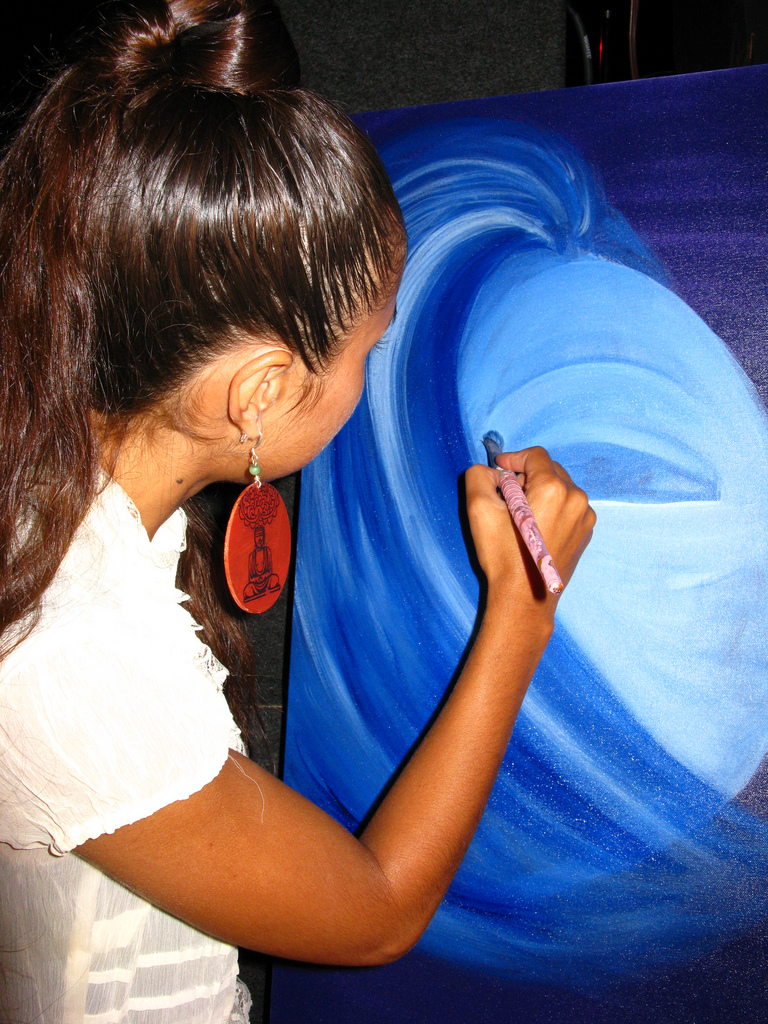 According to a research note released last week by the National Endowment for the Arts, women artists still earn less than men.
Women artists earn roughly 28 percent less than men in non-performing artistic jobs, the report states. Female performing artists, though, approach parity, earning about $.96 for every dollar earned by male performers.
According to a research note released last week by the National Endowment for the Arts, women artists still earn less than men.
Women artists earn roughly 28 percent less than men in non-performing artistic jobs, the report states. Female performing artists, though, approach parity, earning about $.96 for every dollar earned by male performers.
While I did not expect the pay for women artists to match that of men (though I certainly wish it did), I am surprised that women earn more than 25 percent less.
NEA research notes are summaries of "current statistical information," according to the agency's Web site.
Want to Play at Carnegie Hall?
How do you get to Carnegie Hall? Practice... or win a YouTube contest! (Insert rimshot here.) In what might be described as American Idol for the classical music crowd, YouTube yesterday announced YouTube Symphony Orchestra, a collaboration with several classical music organizations.
The London Symphony Orchestra plays the Internet Symphony No. 1 "Eroica" - for YouTube, conducted by Tan Dun.
Through January 28, 2009, musicians of any skill level can submit a video performance of a work by composer Tan Dun (Crouching Tiger, Hidden Dragon). The performances will be rated by judges and YouTube users, and the finalists will be invited to participate in April's YouTube Symphony Orchestra summit and perform at Carnegie Hall with conductor Michael Tilson Thomas.
YouTube Symphony Orchestra also offers a collection of online tools for learning and rehearsing the new Dun piece.
Rosin your bow, head on over to YouTube Symphony Orchestra and start practicing.
Holiday Downtime? Brush Up on Tech
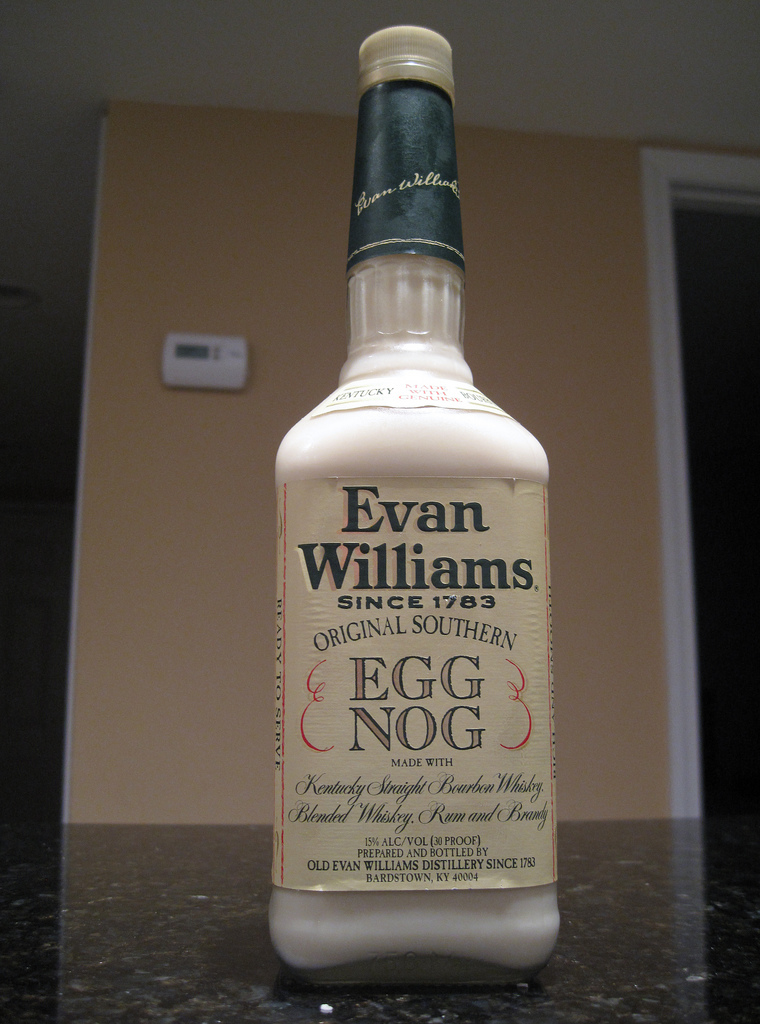 While the holidays can sometimes seem very busy (especially if you're a dance company producing 'The Nutcracker'), there is typically a great deal of office downtime. Therefore, I'm issuing a challenge this holiday season: Pick one tech-related skill you'd like to learn and use any downtime to get cracking.
It doesn't have to be anything particularly difficult. Maybe you work with Excel for budgeting, and you'd like to know more about advanced filtering options. Perhaps you'd like to learn some basic HTML so you can tackle your own Web updates rather than passing them off to sit in a queue.
While the holidays can sometimes seem very busy (especially if you're a dance company producing 'The Nutcracker'), there is typically a great deal of office downtime. Therefore, I'm issuing a challenge this holiday season: Pick one tech-related skill you'd like to learn and use any downtime to get cracking.
It doesn't have to be anything particularly difficult. Maybe you work with Excel for budgeting, and you'd like to know more about advanced filtering options. Perhaps you'd like to learn some basic HTML so you can tackle your own Web updates rather than passing them off to sit in a queue.
Whatever the skill you'd like to learn or refine, I'm here to help. Contact me with your holiday tech education wishes, and I'll send you some information and links to steer you in the right direction.
Don't just sit around drinking eggnog and making garland hats this holiday season. Brush up on your tech skills!
(Photo Credit: Scott Beale / Laughing Squid)
Will You Go? New Patron Facebook Tool
Gene Carr, founder and president of Patron Technology, recently blogged about his company's new Facebook app for New York arts groups and audiences. The app, i'll go!, is a free downloadable tool that provides users a way to connect around events and organizations a way to encourage first-time attendance through Facebook-only discounts.
See a screenshot of the event search interface after the jump.
As this app is in beta, I'd strongly encourage New York organizations and audience members to install it and give it a go. If the app catches on, Carr says Patron will expand the tool to include other cities.
Happy Birthday, René Magritte...
White Space
 While many Americans are happy about last night's Presidential election results, a handful of geeks are even more excited about an important Federal Communications Commission vote.
While many Americans are happy about last night's Presidential election results, a handful of geeks are even more excited about an important Federal Communications Commission vote.
The FCC unanimously agreed yesterday to open up the television white spaces - a spectrum between broadcast channels - for wireless communications. The agency has stated that the move could lead to "Wi-Fi on steroids" because of the capacity for improved wireless connectivity.
What does this means for arts organizations? Well, beyond more affordable wireless access, that remains to be seen. But we'll keep you posted as this decision comes to fruition.
Surviving the Economic Meltdown as a Nonprofit
Several posts from around the arts blogging community have addressed the issue of fundraising in financially tough times. ("Tough" is an understatement, I know.) TechSoup recently posted an entry that pulls together some of the posts, and I thought it was important to share the link here. Obviously, there are no silver bullets, but it's helpful to see an overview of other organizations' strategies for fundraising when wallets are light. If nothing else, it's good to know that all nonprofits are sharing in this struggle.
So what technology tools are important for surviving the economic downturn (aka: recession, depression, slowdown, bump in the financial road)?
Social Media - Facebook, MySpace, Flickr and other online social resources are still the best way to use the Web to create community and investment in your organization. And if someone is truly invested in you, they will continue to support you regardless of their financial situation. Activate your network and get others to spread the news about how great you are.
Donation Buttons, Links and Widgets - (Please note: This post is not intended to endorse Barack Obama. Rather, this is an endorsement of his fantastic digital asset team. I feel there are valuable lessons to be learned by the nonprofit world from Obama's online campaign strategies.) Barack Obama's digital campaign efforts have been astounding. Even if he doesn't win the upcoming election, his campaign's online fundraising success has been extraordinary. One thing that has led to this success is the sheer number of times the campaign asks for money. In every message I receive from them, be it via Web, email or mobile device, there is a donation link or button. And because of the way their communications have been tailored and carefully crafted, I don't think of them as spam. In my opinion, if someone has opted into your lists, they're telling you they're interested in your work. As any fundraising pro will tell you, the secret to success is not being afraid to ask for money over and over and over again. Also, the Obama team hasn't asked me to give large gifts. Typically they're asking for $25-50. It's much easier and more likely for me to give $25 a few times a year than it is for me to give $250 in one lump sum. This may sound odd, but why not nickel and dime your supporters?
Online Fundraising Events - Rather than dishing out tons of money for artist travel, catering and rental fees when you want to offer fundraising events, why not try to host a few fee-based online opportunities? For instance, an arts organization could team up with a local band to offer an online concert followed by a chat session. You could require a donation in order for a user to access the concert and followup chat. Obviously, there is no virtual replacement for a live gala, but you may be overlooking some valuable opportunities for providing donors additional online content.
An important thing to remember is that in times of financial distress, it is more important than ever to make sure you have a clear and measurable communication strategy. For more information on establishing clear and effective communication goals, check out the Spitfire Strategies Smart Chart 3.0. This doesn't focus exclusively on digital communications, but it can be easily tailored for any type of message.
Get Your Phil...
The New York Philharmonic has created a subscription series that allows people under age 35 to build their own season package for only $29 per ticket. Subscribers using MyPhil, as the program has been dubbed, get the best available seats in the house at the time of purchase, so the value of the discount fluctuates depending on the seat(s) one is able to secure.
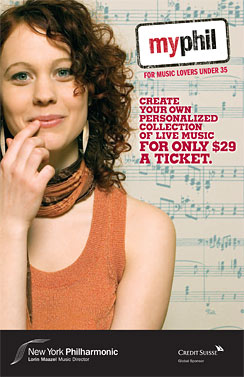
The subscription plan offers extra tickets throughout the season for guests for just $29 and also provides scheduling flexibility should a conflict arise on the date of your ticketed performance. In addition, MyPhil subscribers get a free one-year subscription to Time Out New York magazine.
This is just another example of an arts organization recognizing the unique needs and habits of the 18-35 set. I'm 31 years old, and the thing I appreciate most about plans like this is the ability to select alternate performance dates should a conflict arise. Young people are less and less likely to plan ahead, as we like to keep our social calendars flexible in the off chance that a better opportunity presents itself.
Confession: I have no social calendar. But if I did, I'd like to keep it flexible.
Web 2.0 Expo: Day Four
Location-Based Content Delivery Today marks the close of the 2008 NYC Web 2.0 Expo, and the very last session I attended offered one of the most intriguing tools. Chad Stoller, head of marketing for Drop.io, and Conor Brady, creative director for Organic, Inc., presented the result of their collaborative efforts.
Drop.io allows you to upload files to a secure online drop and share them with others. Combine the ease of Drop.io with the interactive marketing savvy of Organic, Inc. and you end up with Drop.io Location, which lets you drop a file and associate it with an area on a Web-based map. GPS-enabled mobile phone users can then download your files when they’re in the location you’ve specified.
I know what you’re thinking. We’ve come so far with technology that we’ve essentially traveled full-circle. Sending files electronically is a modern convenience that’s worn out its welcome, so we’re now creating tools that require people to travel to retrieve files?
True, you wouldn’t want to email your boss the following:
“Hey Mr. Johnson, I’ve completed the 2008 Second Quarter Report. If you’d like to review it, go to the Starbuck’s at the corner of 8th and Walnut.”
Mr. Johnson would probably tell you to pick up your pink slip at the corner of No Way Street and Suck It Avenue.
But Stoller and Brady offered some thoughts on how Drop.io Location might have practical value, and I’ll translate their examples to befit the arts.
Example 1: A local band has written some new songs exclusively for a theater company’s new production, and the only way for people to get those songs is to attend a performance of the play. The songs have been uploaded to Drop.io and associated with the theater’s address.
Example 2: A city has launched a new public art exhibit and wants to offer site-specific content beyond the traditional audio guides. Files could be dropped based on the location of each art piece and visitors could use their mobile devices to retrieve the content.
It’s a truly amazing tool, and it’s clear that Stoller and Brady are looking ahead. Location-based interactivity is the next major phase of marketing.
Drop.io Location is currently in beta, and you can request an account here.
Thought for the Day
If I Google search your name and get no results, does that reflect poorly on you as a human being? I think it does. Shame on you.
Web 2.0 Adventure
As there were nearly 5,000 people in attendance at the Web 2.0 Expo, it wasn’t a simple feat to physically connect with people. Case in point - my meeting with Jason Fried and David Heinemeier Hansson of 37Signals.
At about 4:30 PM yesterday, I received a text from Fried: “We’re at the keynote hall. Want to come our way?”
Me: “Cool. Be right there.”
As I arrived at the keynote hall, I received this from Fried: “Now we’re in the main lobby.”
Me: “OK, Headed that way.”
I rush to the main lobby only to receive: “Now we’re upstairs near registration.”
By this point, I was hearing the theme music from 24, and I felt like Jack Bauer in a race to save the life of some random dignitary.
Ultimately, I caught up with the 37Signals guys, and my interview with them will be featured on Technology in the Arts Podcast #51 next Friday, September 26.
Web 2.0 Expo: Day Three
As I wandered around the exhibition floor at the 2008 Web 2.0 Expo today, I was struck by the sheer number of online software tools that are available. Think of the most random activity, and there is likely a Web service to support that activity. Collaboration, aggregation, project management, stamp collecting, grocery list facilitator... on and on and on. Also, as I sat through today's sessions, it became apparent that some of these people don't know what they're talking about. And I don't necessarily mean that in a bad way. In fact, most of them will admit that they don't know.
Often a Web site will become incredibly popular, making its creator very wealthy, for no obvious reason. The success is not really quantifiable and there is no formula for repeating that success. Basically, the developers threw something against a wall, it stuck and they were asked to speak to an audience of other developers about their process.
Again, I am not disparaging the Web 2.0 Expo, as there are some phenomenal sessions and speakers. It's simply the nature of the Internet that there's a scant amount of rhyme and reason to online marketing.
Clay Shirky spoke about the prevalence of Web garbage during the keynote session this morning, and he offered the grim thought that there might not be an end to the flood of data. He supported this with a quote from Yitzhak Rabin: "If you have the same problem for a long time, maybe it's not a problem. Maybe it's a fact."
Shirky also remarked that the Internet has allowed everyone to be a publisher because of the low cost, no cost capabilities. As there is no longer an economic "crap" filter, the onus to sort through the junk is placed on the user.
Further, Tim O'Reilly, who coined the term "Web 2.0" (much to my chagrin), pointed out that the best and brightest minds in the world are being used to create goofy Facebook and iPhone applications. So it isn't likely that the river of online trash will run dry anytime soon.
When I have a solution to this problem, I'll let you know. In the meantime, check out this post from ReadWriteWeb that outlines "6 Ways to Filter Your RSS Feeds." When it comes to clearing the clutter, it's a step in the right direction.
Additional Notes
Chrome Nearly Blows Chunks: A Google developer presented the company's new Chrome browser this morning. He apologized at the beginning, mentioning that he was ill and might have to "run off the stage." Way to relax an audience, dude. Also, if you're going to present a browser that only runs on Windows, you might want to think about bringing a Windows machine. Still, he made it through the presentation without losing his breakfast. Huzzah!
Surface Without Depth: Microsoft showed off its new Surface tabletop display in the Web 2.0 Expo Hall, and I wasn't very excited. The device offers a multi-touch, multi-user interface that lets users drag items around in a very tactile way. Here are some videos that show off some of the Surface's recent commercial launches.
Yes, it's cool, and it's certainly time to explore interactivity beyond the mouse and keyboard. But the consumer version of the Surface isn't set for release until 2011. By then, surely something much more innovative - and affordable - will be available.
Web 2.0 Expo: Day Two
The highlight of my day was interviewing Eileen Gittins, the founder, president and CEO of Blurb, an online publishing service that provides print on demand tools for the general public. With Blurb's book layout software, BookSmart, users can create books using their own text and images and upload them to the Blurb server for purchasing, printing and delivery. Like Lulu.com (see Josh Futrell's recent blog post), Blurb empowers writers, photographers, graphic designers, and other artists to control the publishing of their work.
Gittins is a passionate entrepreneur who truly understands her client base. (She started Blurb based on her own frustrations with the publishing industry.) Blurb and the related project Photography.Book.Now exemplify what is truly phenomenal about the power of the Web.
No more spoilers. You can listen to my interview with Gittins (and a few other Web 2.0 Expo players) on Technology in the Arts Podcast #51 on Friday, September 26. (Go ahead and subscribe already, you slouch!)
I also digested this morning some tips on viral marketing during Jonah Peretti's Web 2.0 Expo session, Viral Marketing 2.0. Peretti, known throughout Web circles as a guerilla media guru, is the co-founder of HuffingtonPost.com and BuzzFeed.
Peretti explained that, contrary to popular opinion, a message doesn't become viral because of influential users. Rather, a message spreads because of the network that supports it. For instance, he explained, a fire spreads when the conditions are perfect and not because the spark that ignited it was special.
"Facebook created a network that would make the driest forest possible so the fires would spread," said Peretti.
The network Peretti highlighted today is what he calls the "Bored at Work" network, which is a huge people-powered network comprised of distracted corporate employees. However, he explained that a big problem with trying to spread a viral message is the "radical unpredictability" of the Web. There is no way to know who will make something popular or what will become popular.
So how can Peretti possibly offer any advice on delivering messages that will succeed in a viral way? He admitted that he didn't have a perfect answer. Still, considering his repeated success at gaining viral acclaim (see The Contagious Media Project for a list of his online exploits that have blown up), there is a great deal of cred behind the tips he offered.
For instance, may absolute favorite of Peretti's techniques is one he dubs "The Mullet Strategy." As most people know, a mullet is a hair style that features a short, professional front-end with a long, flowing rear. Peretti compared this "business in the front, party in the back" approach to marketing. Since the most contagious media is often silly, fun and even shocking, it isn't always appropriate for that content to live on the front page of a Web site. However, if there is a "party in the back" and people are enjoying and sharing that party, it will most definitely drive traffic to the other areas of your site.
Web 2.0 Expo: Day One
Today was "workshop" day at the 2008 NYC Web 2.0 Expo, and while I enjoyed the two three-hour sessions I attended, I would not consider them workshops. I always expect a workshop to provide attendees an opportunity to put into practice some of the concepts discussed. I'd strongly encourage artists and arts organizations involved in the planning of a conference or professional development series to be cautious about the use of the word workshop. Any session that exceeds two hours should have some type of engagement activity or risk losing the attention of the laptop/iPhone-wielding audience.
That being said, the leaders of both sessions I attended today managed to keep my attention. I was especially engaged during Josh Porter's presentation, "Designing for Community." Porter is the founder of bokardo design and author of the book, Designing for the Social Web.
Toward the beginning of his talk, Porter mentioned two very important things. First, your message will get out into the world, and you can either choose to ignore the message or engage with users.
An arts example: A theater company is getting negative reviews in the local newspaper for its current production, but audiences are greatly enjoying their experience with the show. Unfortunately, those audiences are shrinking because users are believing the newspaper's message. If the theater had created an online space for actively engaging its audience, it could allow the community - not the voice of a lone critic - to define its show's success.
Second, Porter said that organizations probably already have communities, whether they know it or not. The idea is to "cultivate" that community. Often in the arts, an organization will try to artificially create a community rather than managing the one which already exists. In order to build a passionate online community, Porter says, an organization should "support an activity and make people better at the activity."
So how do you make people "better" at being an arts audience? Well, that's a much larger discussion than I care to launch here, and the answer is different from one discipline to another. But the point is that an organization should work with and grow its existing community and should not try to manufacture one.
"You want the people to identify themselves as a community," said Porter.
Another great point Porter made - which has been mentioned in many forms on this blog and on our podcast - is that when an organization is considering which interactive features to add to its Web presence, it should simply "model the interactions that already exist." In other words, study how your users are already connecting (both online and offline), and provide tools that support those connections.
Finally, according to Porter, most successful community-based Web sites comprise "objects" and "verbs." For instance, a YouTube page has objects (i.e., video pane, user profile, related videos, responses, etc.) and verbs (i.e., play, upload, respond, etc.).
I'll leave you with the following image from the "Creating Passionate Users" blog, which Porter mentioned today.
Web 2.0 Expo Updates
Technology in the Arts blog and/or podcast subscribers know that I despise the buzzword "Web 2.0." So why this week am I attending the New York edition of the conference that officially launched that term into our tech lexicon? Because no matter what you call today's interactive, social online experience, the tools and applications that serve as the foundation for the modern Web are incredibly important.
 So I just arrived in Manhattan for the 2008 NYC Web 2.0 Expo, where I'll enjoy a full slate of sessions and workshops designed to "immerse" me in the concepts and practices that are shaping the "Internet Revolution." (Note: I forgot to bring my big red flag, so I hope I'm not left behind when we storm the digital Bastille.)
So I just arrived in Manhattan for the 2008 NYC Web 2.0 Expo, where I'll enjoy a full slate of sessions and workshops designed to "immerse" me in the concepts and practices that are shaping the "Internet Revolution." (Note: I forgot to bring my big red flag, so I hope I'm not left behind when we storm the digital Bastille.)
I'll be blogging from the Web 2.0 Expo all week, so be sure to check in every day for my regular updates. Better yet, simply subscribe to our RSS feed (how?) to have my entries delivered to you as soon as I post them.
Some of the sessions I'll be attending include:
- Rich UX ("user experience") Documentation
- Designing for Community
- Future of Mobile Social Activity
- Web 2.0 and the Reinvention of Marketing and PR
If you have specific questions about Web 2.0 or the NYC Expo, please feel free to send them to info@technologyinthearts.org.
Also: Be sure to follow my Twitter feed for regular updates.
Monday Morning Freebies...
Call me cliché, but Mondays stink. So I'm offering a couple useful sites to brighten your week. Zamzar: Free Online File Conversion
Zamzar.com is one of my favorite online discoveries in quite some time. The tool allows you to upload a file and convert it to another format of the same type. For instance, you can upload and convert a WAV audio file to MP3, a DOC file to PDF, a WMV file to MP4, etc. You can also upload a file and compress it to a ZIP file.
Once you've uploaded your file(s), you just select your desired conversion format and click "Convert." Within an hour (usually no more than a few minutes, depending on the number/size of your files), you'll receive an email with links to download your new files. The site even lets you convert multiple files at once.
Zamzar's free account lets you convert files up to 100 MB, but you can pay for premium plans.
Umbrella Today?
Sometimes the simplest things are the most useful. Such is the case with UmbrellaToday.com, a weather site that makes things easy.
It's always frustrating to visit a weather site, enter a zip code and get vague information and percentages. I didn't major in meteorology, and I don't want to read radar maps. Sometimes I just want to know if I'm going to get wet.
With UmbrellaToday.com, you simply enter your zip code to ask the question, "Do I need an umbrella today?" and the site gives you a big fat "YES" or "NO." You can also enter your mobile number and select a time to receive a daily text alert from the site.
Never again will my perfect quaff be ruined by Mother Nature.






